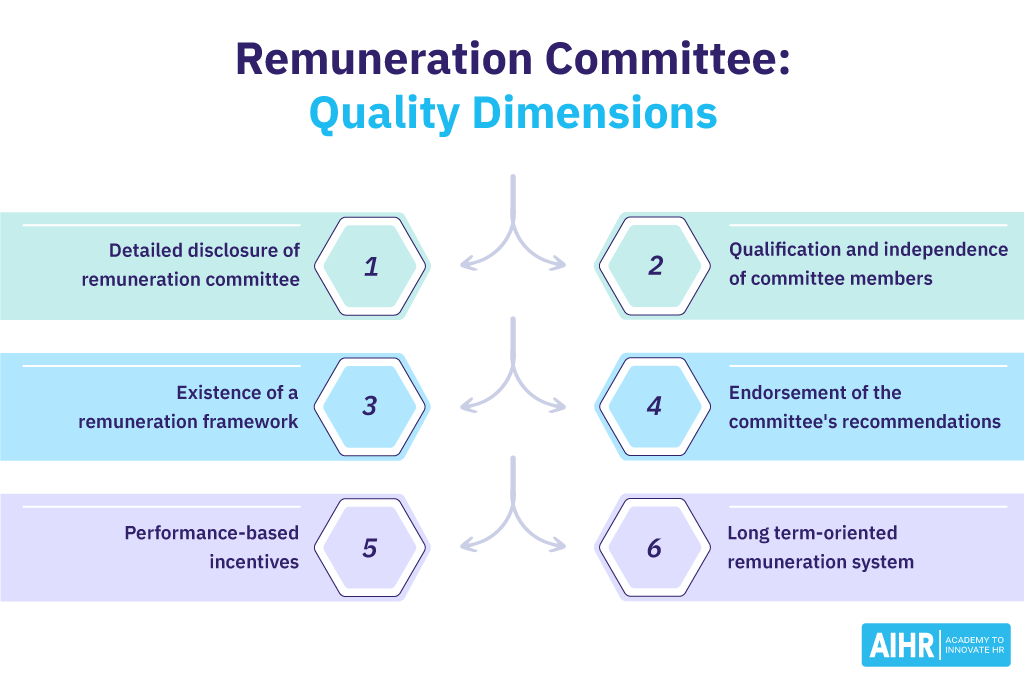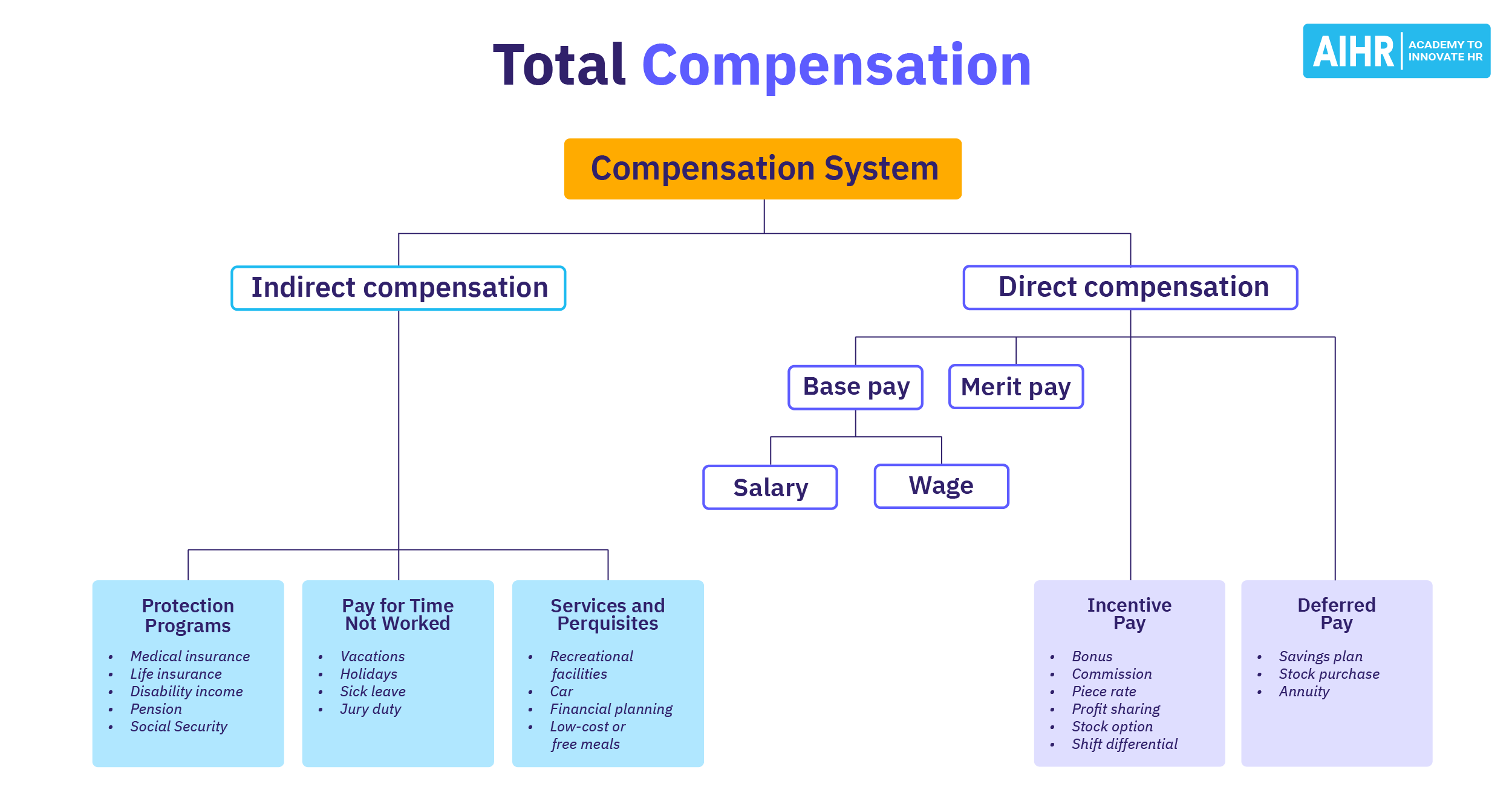Remuneration Committee
What is a remuneration committee?
A remuneration committee is a group within an organization (typically a board committee) responsible for determining the compensation and benefits of the company’s executives, including the CEO and other senior management. This committee ensures executive pay aligns with the company’s performance, strategic objectives, and shareholder interests.
The remuneration committee plays a crucial role in maintaining transparency and fairness in how top executives are rewarded, balancing the need to attract and retain talent with the interests of the company and its shareholders. This role is central to the remuneration committee’s function within corporate governance, ensuring compensation policies support long-term business success.
Remuneration committee roles and responsibilities
The roles and responsibilities of the remuneration committee typically include:
- Setting executive compensation: The remuneration committee determines the remuneration packages for the company’s top executives, including the CEO and other senior leaders. This involves setting base salaries, bonuses, share options, and other benefits. The committee ensures these compensation structures align with the company’s long-term strategic goals and are in the shareholders’ best interests.
- Monitoring executive performance: The committee regularly reviews senior executives’ performance against pre-agreed targets and benchmarks. Based on these evaluations, the committee may adjust executive compensation to reflect their achievements or shortcomings. This continuous monitoring is essential to ensure compensation remains fair and aligned with performance.
- Reviewing and approving incentive plans: These plans include annual bonuses and long-term incentive plans (LTIPs), which must be competitive and performance-based. The committee also establishes clear, measurable performance criteria executives must meet to qualify for these incentives, ensuring they drive the desired business outcomes.
- Ensuring compliance and transparency: This includes adhering to the guidelines set by regulatory bodies and stock exchanges. The committee also oversees the preparation of the remuneration report included in the company’s annual report, ensuring it is clear and accurate and provides sufficient detail for shareholders to understand the company’s remuneration practices.
- Engaging with shareholders: The remuneration committee must engage with shareholders to explain the company’s remuneration policies and decisions, especially in contentious cases. It also considers shareholder feedback on executive pay and makes adjustments when necessary to maintain a good relationship with the company’s investors.
Who are the members of the remuneration committee?
The remuneration committee should consist of:
- Independent non-executive directors: The purpose of their inclusion is to avoid conflicts of interest. Members should have a high-level understanding of internal and external factors that affect the organization.
- A chairperson: The remuneration committee needs to appoint a committee chair.
- A secretary: The secretary is responsible for accurately taking minutes at all remuneration committee meetings.
- At least three members: Depending on the organization’s size, a remuneration committee needs at least three members. The odd number of members allows for ties to be broken in case of disagreement.
Remuneration committee best practices
1. Consider important factors
A remuneration committee needs to take into consideration various vital factors when guiding executive directors’ and senior managers’ compensation packages:
- Company size: Company size affects executive directors’ and senior managers’ total pay, including salary amounts, bonuses, and LTIPs. Company size can be measured by revenue, margins, financial structures, and even headcount. The remuneration committee determines which factors are most appropriate.
- Performance: The remuneration committee must clearly understand a company’s performance and its position in the profitability cycle. Some might experience phenomenal growth one year but very little the next. Certain circumstances may call for stronger remuneration benefits (such as when the company performs well). In contrast, a conservative remuneration policy might be more appropriate when the company is struggling.
- External factors: Remuneration committees must consider global considerations in their compensation policies. This allows them to account for any change in the external environment that could influence overall company performance. Companies with a wide geographical spread should follow a consistent approach in line with the regulations of the countries where they operate.
2. Prioritize independent committee members
Ensuring that committee members are independent and free from influence is crucial. To avoid conflicts of interest, members should not have personal or financial ties to the executive team. This independence allows for more objective decision-making, focusing solely on the best interests of the company and its shareholders.
3. Implement strong policies against conflicts of interest
Strong conflict-of-interest policies are necessary to maintain the remuneration committee’s integrity. These policies help identify and manage potential conflicts, ensuring bias-free, fully transparent decision-making.
4. Share knowledge
Committee members do not have lifetime appointments. Discussions between old and new remuneration committee members are essential for transferring knowledge of long- and short-term incentives, the marketplace, and other important considerations related to bonuses and salaries. There might also be special arrangements for individual directors that old and new committee members should discuss.
5. Take company values into account
Every member of the remuneration committee must align with the company’s organizational culture and values. These elements are reflected in the remuneration philosophy and, therefore, the policies and practices implemented.
6. Understand the business context
Remuneration committee members must embed themselves in the company’s business in order to understand the financial and market data with which the company operates. This is important as the committee members provide direction on the remuneration policy for executive directors and must consider shareholder interests. Often, committee members sit on the board of directors and should have some understanding prior to their appointment to the board. However, further understanding may be required.
A remuneration committee must uphold the highest standards and maintain quality throughout the process based on the following criteria:

7. Initiate objective conversations with the CEO
The remuneration committee should engage in regular, objective conversations with the CEO and other key executives. These discussions should focus on performance, expectations, and alignment with the company’s long-term goals. Maintaining an open and honest dialogue helps ensure remuneration packages are fair and aligned with company performance.
8. Adopt regular communication
Regular communication among committee members and between the committee and the board is essential. This ongoing dialogue helps ensure everyone is aligned on the company’s remuneration strategy, allowing for adjustments based on changes in company performance or external factors.
FAQ
The remuneration committee oversees the company’s compensation policies, including senior executives’ and directors’ pay and benefits. The committee ensures compensation packages align with the company’s strategic goals, shareholder interests, and regulatory requirements and promotes fairness, transparency, and competitiveness in attracting and retaining top talent.
The remuneration committee should meet at least twice yearly, typically around key decision-making periods (such as before annual salary reviews or bonus distributions). However, additional meetings may be necessary depending on the organization’s size, complexity, and specific needs. Regular meetings ensure timely and effective oversight of executive compensation and alignment with the company’s strategic goals.









